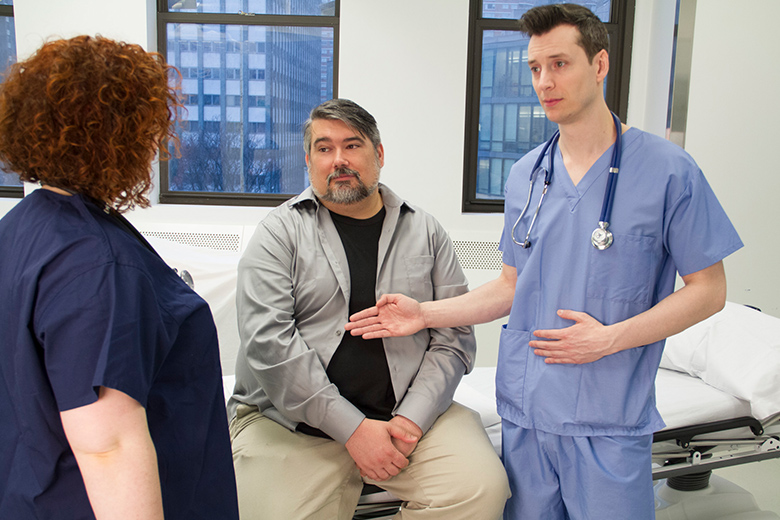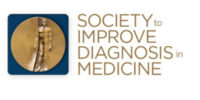Overview
The introductory principles module and six virtual patient cases in Aquifer Diagnostic Excellence introduce students to the cognitive processes and system-related issues that can lead to errors.
Diagnostic accuracy is the foundation of safe, effective medicine—yet 15% of inpatient cases involve some degree of diagnostic error. Aquifer Diagnostic Excellence introduces students to the cognitive processes and system-related issues that can lead to errors.
Aquifer Diagnostic Excellence is part of Aquifer’s Clinical Excellence Case Set, which includes 52 cases covering Palliative Care, Trauma Informed Care, Diagnostic Excellence, High Value Care, Social Determinants of Health, and Telemedine.
Medical error is the third leading cause of death in the U.S., causing at least 250,000 deaths every year. Diagnostic error represents anywhere from 40,000 to 80,000 of those deaths, making it the sixth leading cause of death.
- Part of Aquifer’s Clinical Excellence Case Set, included with Curricular Partner subscriptions and available by subscription to Limited Subscribers
- Created for educators, by educators, in collaboration with the Society to Improve Diagnosis in Medicine
- Ready-made cases to support self-directed learning, appropriate to supplement pre-clinical or clinical learning
- Cases take approximately 15-20 minutes to complete.
- Appropriate to support pre-clinical or clinical learning.
- Can be combined with other cases in a custom course to meet the needs of your specific curriculum.
Cases include foundational content about diagnosis, contributing factors, and strategies to avoid errors. Causes and consequences of diagnostic errors for patients, families, and providers are discussed in detail and students are encouraged to reflect on their own experiences. Aquifer Diagnostic Excellence provides tools to help students mitigate diagnostic error.
This cross-disciplinary course covers a range of topics, including internal medicine, surgery, gynecology, psychiatry, family medicine, and pediatrics.
All Clinical Excellence Case Sets, including Diagnostic Excellence, now include:
- Principles module: covers key definitions, epidemiology, explanations of key principles and why they are important for patient care, and a harm statement that makes it explicit what harm can come to the patient if the principle is not incorporated into practice.
- Application Cases: Brief, realistic case scenarios that focus on one area of a patient encounter, and are centered around asking students to make important clinical decisions. Content models evidence-based best practices and communication strategies, exploring the real-world impacts on care and potential harm. At the end of each case, a reflection question asks the students to consider key takeaways, implications for their future practice, or personal wellness. Each application case also includes self-assessment questions that extend the learning to other scenarios.
Aquifer Diagnostic Excellence is designed for any level student in a medical school or health professions program. The course is an ideal assignment for students to complete as preparation for clinical experiences that include telemedicine. Cases also serve as valuable reference material for students to return to as they need to refresh their knowledge during clinical rotations.
Programs with a current Aquifer subscription will also have faculty and administrator access to an accompanying educator guide. Subscribers will also be able to view student progress reporting and combine the new cases with other Aquifer content in a custom course.
- Diagnostic Excellence 01: Principles of diagnostic excellence
- Diagnostic Excellence 02: 35-year-old male with abdominal pain
- Diagnostic Excellence 03: 16-year-old female with pelvic pain
- Diagnostic Excellence 04: 10-year-old male with chronic abdominal pain
- Diagnostic Excellence 05: 84-year-old female with sepsis
- Diagnostic Excellence 06: 12-day-old male infant with bloody stool
- Diagnostic Excellence 07: Two females with iron-deficiency anemia
From Our Cases
Educator Guide & Classroom Activities Available

Course Overview – Integration Strategies – Active Learning Classroom Strategies – Case Details
The Educators Guide—available to institutional subscribers—provides a quick reference guide for all cases and resources included with Aquifer Diagnostic Excellence. Integration strategies and suggestions for custom courses are also included, making it easy to include this key topic in a variety of rotations and courses. The Educator Guide provides a wealth of valuable, engaging Active Learning Classroom Strategies ready to use in your teaching.
The Educator Guide and individual activity worksheets are available in the Educator Resources section of your Aquifer account. Learn more…
Learn More
Learn how Aquifer Diagnostic Excellence can benefit students and faculty in your program:
Testimonials
“My second-year medical students valued learning about diagnostic errors in an interactive manner and appreciated being able to practice clinical reasoning while learning about patient safety.”
Laurie Broutman, MD, FACP Chicago Medical School, Rosalind Franklin University of Medicine and Science
“In our first year using Aquifer Diagnostic Excellence, we noticed that students started talking about types of errors during their clinical presentations. Clearly, it was sinking in! For me, the most rewarding part was seeing a student take what they learned from the course and create a presentation about a clinical case they observed which had a medical error. The presentation included a discussion about steps to minimize errors in the future, such as better hand-offs, clearer documentation, and avoiding diagnostic momentum.”
Darin Brink, MD University of Minnesota Medical School



